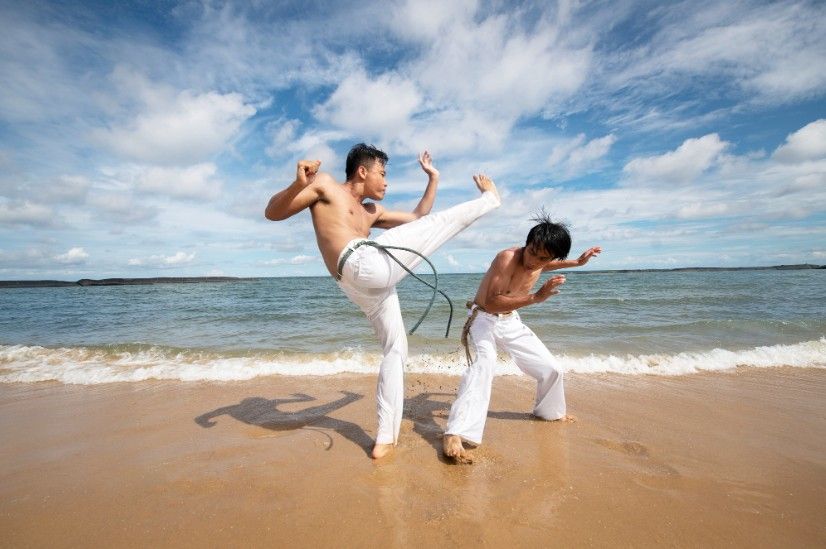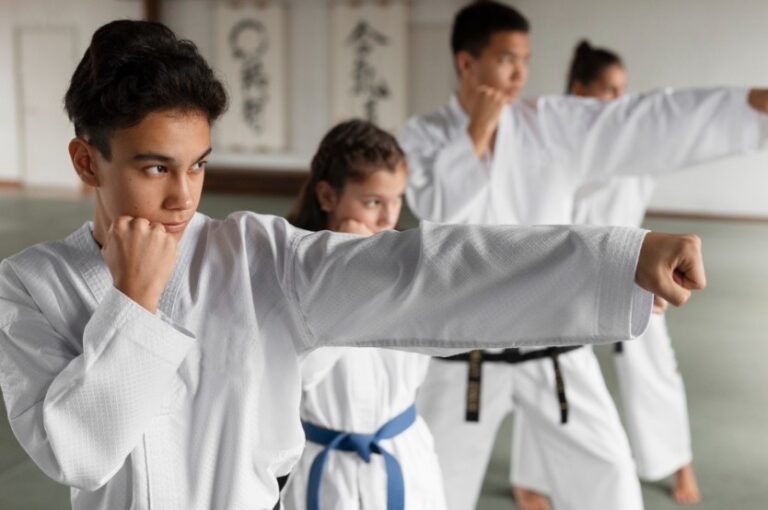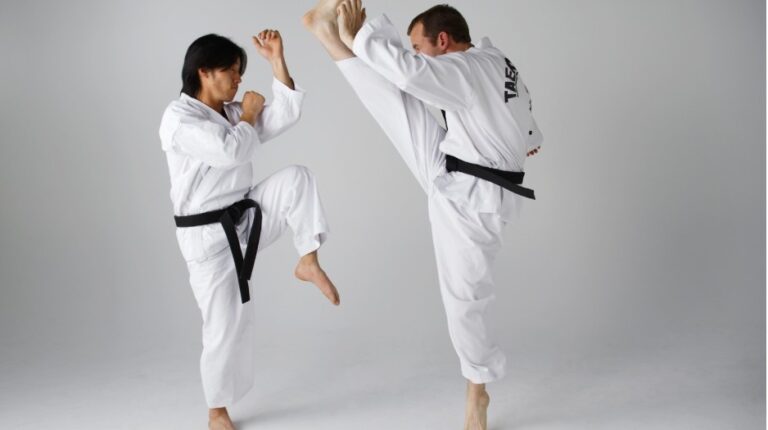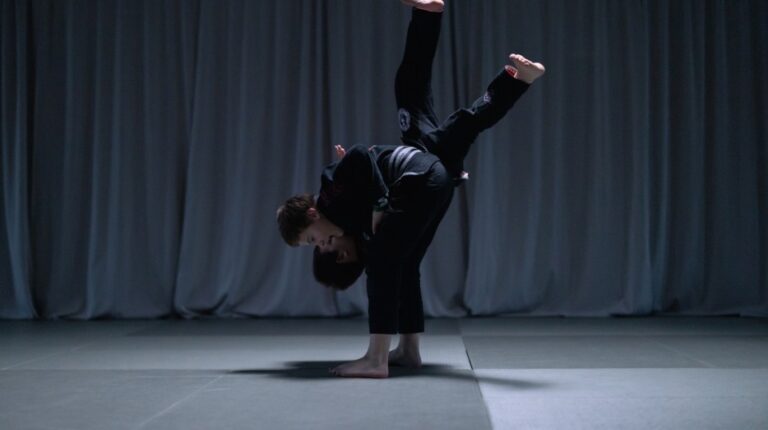When I first began teaching Taekwondo, one of the most frequently asked questions I received from new students was, “What exactly is sparring in Taekwondo?” Now, this wasn’t coming from just beginners—some of the seasoned students were curious too. Sparring can seem a bit intimidating at first. After all, it’s one thing to learn the moves and techniques in a controlled setting, but when you step into the sparring ring, it’s a whole different ball game.
But here’s the truth: sparring in Taekwondo is not about violence or aggression. It’s about technique, timing, strategy, and self-control. Think of it as a physical chess game, where you outsmart your opponent with carefully executed movements. The beauty of sparring in Taekwondo is that it allows students to apply their learned skills in a live, dynamic environment, while also testing their mental and physical limits.
So, let’s break down the basics of sparring in Taekwondo, its rules, and how you can excel at it. Whether you’re new to the sport or just looking to polish your skills, you’re in the right place to learn!
What Makes Sparring in Taekwondo Unique?
When we talk about sparring in Taekwondo, we’re not talking about random street brawls or untrained fighting. Instead, sparring in Taekwondo is highly structured and governed by a set of rules that encourage fairness, respect, and, most importantly, technique. It’s a form of controlled combat where two practitioners face off using Taekwondo techniques and strategies to outscore the opponent through precision, speed, and control.
Unlike other martial arts that focus on grappling or ground fighting, Taekwondo sparring revolves primarily around kicks, punches, and blocks. The emphasis is on delivering powerful, high-speed strikes while maintaining balance and control. Points are awarded based on the clean execution of these techniques, with bonus points for more advanced moves, such as head kicks.
The Structure of a Taekwondo Sparring Match
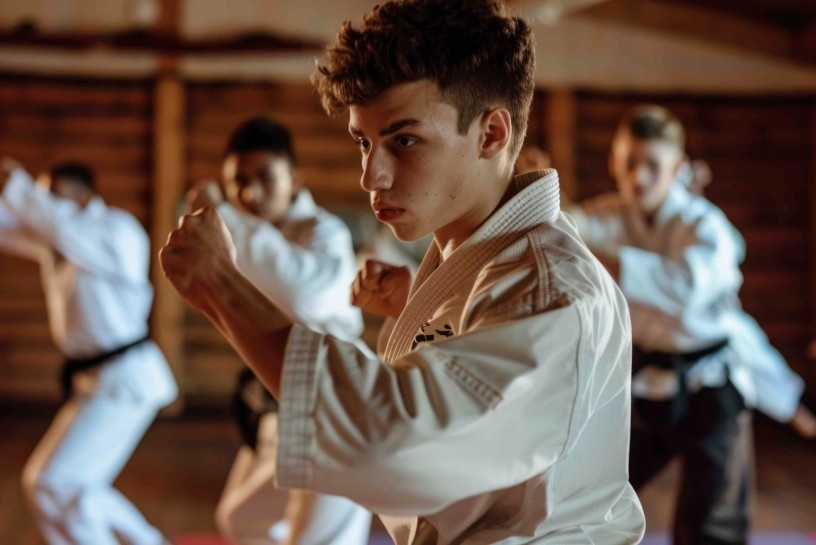
In a typical sparring match, competitors face off in a ring or on a mat, and the match is divided into rounds. In Olympic-style Taekwondo, the match consists of three 2-minute rounds with a 1-minute break in between. For those practicing under the World Taekwondo (WT) system, the match is overseen by a referee and judged by a panel. Points are scored when an opponent successfully lands a legal strike on the body or head.
A few things are key to understanding sparring in Taekwondo:
- Focus on Kicks: Kicks are the main weapons in sparring. Taekwondo practitioners are known for their high, fast, and powerful kicks.
- Speed and Control: Speed is essential, but control is equally important. Taekwondo practitioners must demonstrate discipline by controlling the intensity of their strikes and maintaining good sportsmanship at all times.
- Scoring Points: Points are awarded based on landing clean, controlled strikes. The body scores fewer points, while head shots and higher-impact kicks score more points.
How Do You Train for Sparring in Taekwondo?
Getting ready for sparring in Taekwondo isn’t just about physical preparation—it’s also about developing the right mental attitude and strategies. Here’s a look at how you can train effectively for sparring in Taekwondo:
1. Master Your Basics First
Before you even think about sparring, it’s crucial to have a strong grasp on the fundamentals of Taekwondo: stance, footwork, basic strikes, and blocking techniques. If these aren’t solid, you’ll struggle when it comes to applying them in sparring. Always practice your basic moves like front kicks, roundhouse kicks, and side kicks with speed and accuracy.
2. Footwork is Key
In sparring, your ability to move quickly and efficiently is everything. Good footwork allows you to control the distance between you and your opponent, making it easier to attack while minimizing the risk of being hit. Practice shifting, stepping, and pivoting to make yourself more agile.
3. Drill Sparring Techniques
Once you’re comfortable with the basics, start practicing in a controlled sparring environment with a partner. You can work on combinations of strikes, counters, and evasions. Your instructor will guide you, focusing on building your reaction time and decision-making skills during live sparring sessions.
4. Mental Focus and Strategy
Taekwondo sparring isn’t just about speed—it’s about outsmarting your opponent. While training, spend time visualizing how you would handle different situations, anticipate your opponent’s moves, and devise strategies to land successful strikes. Sparring is often a battle of wits just as much as it is physical skill.
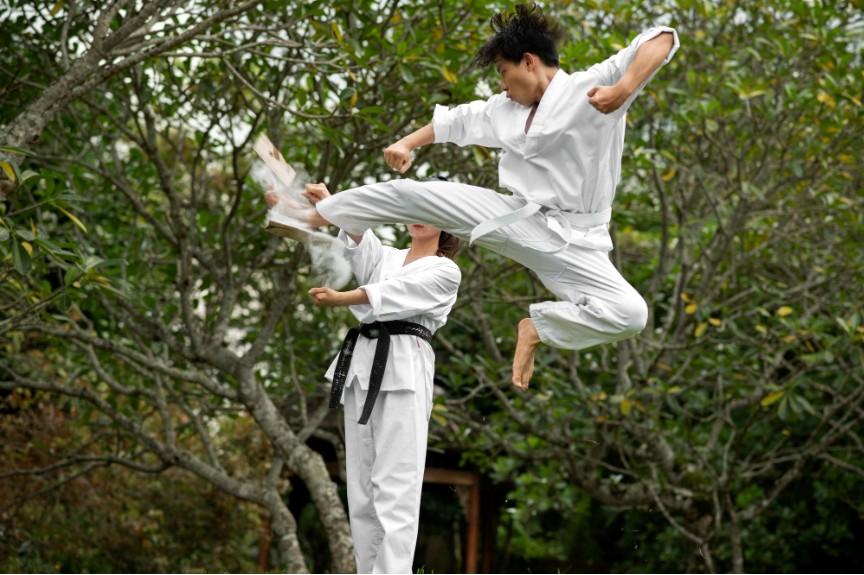
What Equipment Do You Need for Taekwondo Sparring?
Safety should always be your top priority when it comes to sparring. To ensure that you’re protected during training and competitions, you’ll need the proper gear. Here’s a breakdown of what you need:
1. Headgear
Headgear protects you from head strikes. It’s essential to reduce the risk of injury during practice and competitions.
2. Gloves
Sparring gloves are designed to cushion the impact of punches and strikes, while still allowing you to maintain control over your techniques.
3. Chest Guard
This piece of equipment is worn on the torso to protect your ribs and vital organs. It also helps with scoring points during the match.
4. Shin and Instep Guards
Shin guards protect the lower legs from kicks and other impacts, while instep guards shield the tops of your feet.
5. Mouthguard
A mouthguard protects your teeth and gums from accidental impacts during sparring.
How to Make the Most of Sparring in Taekwondo
Now that you understand the basics of sparring and what it takes to train, let’s explore how you can make the most of your sparring sessions.
1. Stay Calm and Focused
While sparring might seem fast-paced and intense, staying calm is one of the most important factors in winning a match. If you’re tense or anxious, your movements won’t be as fluid. Breathe deeply, stay focused, and react quickly.
2. Learn from Every Sparring Session
Regardless of the match’s outcome, always take the time to reflect afterward. What did you do well? What areas could you improve? With each sparring session, you’ll learn something new about your technique and your opponent’s behavior.
3. Increase Your Endurance
Sparring is a physical challenge that requires stamina. Build your cardiovascular fitness so that you can maintain your energy throughout each round, ensuring that you don’t tire out before your opponent does.

FAQs about Sparring in Taekwondo
1. How do you score points in Taekwondo sparring?
Points in sparring are awarded when an opponent lands a clean, controlled strike to the body or head. Body shots score fewer points, while headshots and high kicks earn more points.
2. Is sparring dangerous in Taekwondo?
When performed with proper safety equipment and under controlled conditions, sparring in Taekwondo is safe. Always follow the rules and maintain control of your movements to minimize the risk of injury.
3. Can I spar as a beginner in Taekwondo?
Yes! Beginners can start sparring after they’ve learned the basics of Taekwondo, including basic kicks and stances. Most dojangs begin sparring practice after a student has achieved their yellow belt.
Sparring Is a Journey, Not a Destination!
Ultimately, sparring in Taekwondo is about growth as a martial artist and continually challenging yourself. It’s not just about winning, but about learning more about yourself, improving your technique, and applying everything you’ve learned in real-time. The more you practice, the more you’ll find yourself mastering not only physical techniques but mental strategies as well. Keep sparring, keep improving, and, most importantly, have fun with it!





